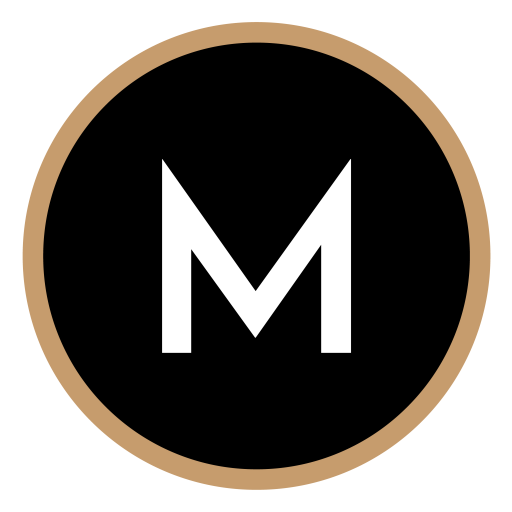My ideal business must be digital, future-forward, and aligned with my personal goals. Specifically, my ideal business must be based on:
- A clear customer pain so I can convey, not convince, value
- High, perpetual, and growing demand
- B2C — selling to the end-user
- Low competition
- Digital delivery
- Strong moats
- Content-led
- Integrated
- Life-aligned
- Future-proof
Let’s dig in.
1. A clear customer pain (convey, not convince)
I’m done trying to convince people they feel a certain pain.
B2B companies are known for needing to educate customers about their solutions, but your solution is either a painkiller or a vitamin.
While vitamins are not necessary for survival, they must prove their worth in terms of cost-effectiveness and ROI.
Painkillers need no such justification.
I suffer from lower back pain. You don’t have to convince me to buy painkillers — I stock up monthly.
I only need to know whether your brand is stronger, safer, or cheaper than my current brand.
No painkiller ad has ever convinced me to buy anything because they didn’t need to. They only had to convey their value, not convince me of it.
I want to sell solutions that generate inbound traffic because they solve a clear pain.
2. High, perpetual, and growing demand
Some businesses never need to worry about demand — the market is always growing. Nappies are one such business.
Unless an apocalypse occurs, Pampers can count on humans to keep reproducing.
The global population has only ever trended one way: up and to the right.
Even several world wars haven’t stopped the global population growth rate.
There will always be room for new market entrants in the nappy industry.
High, perpetual, and growing demand makes it easier to raise funding when you need it. A large market size always looks good on your pitch deck.
3. B2C — selling to the end user
Throughout my career, I’ve switched between B2B, B2C, B2D, and DTC marketing.
For the non-marketers reading this, those acronyms are business-to-business, business-to-consumer, business-to-developer, and direct-to-consumer (usually e-commerce).
All four niches taught me plenty about marketing, each with pros and cons. However, I prefer selling directly to the end user.
Whenever I go through a marketing manager or director on behalf of the company, things get lost in translation, as there are too many layers to get through.
Selling to businesses is lucrative but they’re notoriously risk-averse.
It takes too long to persuade a business customer — specifically, decision-makers — to abandon their current way of doing things and consider a new, unknown way.
From experience, without high pain and clear demand, you can go months between sales — unless you’re banking on referrals or are in a well-placed network.
There are several benefits to selling to the end user. For one, you need only convince one person.
Secondly, they deal with you directly, making the engagement more personal. That’s my style.
4. Low competition
Ideally, I’d like a business with low competition. There’ll always be competition — not necessarily from a direct competitor but from existing solutions.
Most times, inertia will be your biggest obstacle. No matter what you sell, your customers were doing fine before they met you — albeit inefficiently.
The basic premise of the Jobs-To-Be-Done (JTBD) theory is that people want a quarter-inch hole, not necessarily a quarter-inch drill. They’ll use whatever gets the job done.
For example, a photography business doesn’t compete against other photography businesses but against smartphones.
Pizza Hut doesn’t just compete against other pizza joints, but against all the chicken, milkshake, and sandwich spots in their area.
I’m okay with all of this and look forward to showing customers why my solution is demonstrably better than what they use.
5. Digital delivery
I’m bullish on remote work, and any business I run must be doable in my PJs at 11 am.
For that purpose, digital businesses win over physical businesses, hands down.
For example, selling e-books is better than selling physical books because you don’t have to worry about storage, labeling, shipping, or handling.
You can open your laptop and create, publish, and distribute your next e-book anywhere.
Digital businesses also scale faster than physical businesses.
For example, if I want to scale a photography business, I must open more studios, hire more photographers, or charge more at the first branch.
These options constitute operational or opportunity costs.
If I want to scale a photography course business, I just need to run more ads.
Because of this, I’m predisposed toward a service or content-based business.
This could be one that sells insight (data-based), guidance (coaching or training-based), or digital experiences (software-based).
6. Strong moats
Serial founders quickly realize the importance of business moats.
Having a marginally better product isn’t enough — you need strong moats to make it harder to topple you, and to make it increasingly foolish to attempt to do so over time.
Two moats I’m eyeing are data and community.
Data moats
Data moats make it incredibly hard to knock you off your perch due to how time-consuming it is to accumulate data.
CB Insights, Statista, and Exploding Topics are three businesses I envy for their data advantages.
These businesses learn more about the world each day and become more valuable.
They can track trends, extrapolate data, and offer useful insights to buyers.
Their marketing consists of merely telling you what they see in their data.
This convinces you to buy their products to stay up to date.
Community moats
The second moat is community. I’ve written about community marketing before.
In short, resilient businesses are built on engaged communities of users facing the same problems.
This is because all their marketing, product research, customer support, and hiring can come from the same pool of people.
With a community, prospects tell you what to build and how badly they want you to build it.
For example, RevGenius is to sales professionals what Inbound is to marketers.
Communities take a while to build, but once they grow past a certain size, network effects kick in.
Gravity pulls in new members and makes them unlikely to leave.
With each passing week, your competitors have a decreased chance of dethroning you.
7. Content-led
I’ve worked in content since I started my career.
Whether teaching it as a lecturer or trainer, creating it as a photographer, or writing it as a content marketer, content has underpinned everything I’ve done.
For me, a content-led business sells or helps people produce content.
Generative AI is all the rage right now. Open AI released GPT-4 the day I started writing this piece (14 Mar 2023).
However, I’ve also considered launching newsletter-based businesses, a magazine, and a writing academy.
Either way, content will run my ideal business — from marketing and sales to hiring and product development.
Content is my edge.
8. Integrated
Of the dozens of monthly subscriptions I pay for, the ones I find hardest to cut are those I use daily, like ChatGPT+ and Adobe.
As such, I’d want to sell a product people use daily. This could be an app or a content-based product (like a newsletter, magazine, or social media content).
Dogfooding your product is key to creating useful features, so I must be my product’s first and most ardent user.
9. Life-aligned
I’ve always aspired to earn a living through writing, speaking, and thinking, and I’ve pursued these activities at different times in my career.
I joined the boards of speaking associations in Namibia and South Africa, lectured briefly, and was a radio presenter.
I produced my own talk show, hosted many Twitter Spaces, and do commercial voiceovers.
I’ve been a copywriter and content marketer, helped produce a few e-books, and currently coach business owners and train teams on social media and business strategy.
My next business must tick as many of these three boxes as possible. Otherwise, I’ll find myself back here looking for a new business.
10. Future-proof
Lastly, my ideal business model is future-proof and adaptable.
So far, AI seems to fit that bill. It’s being touted as one of the greatest revolutions of our time.
Building an AI-based business sounds like a great way to protect yourself from obsolescence.
I could sell nappies, but an AI-based business only requires a laptop and a WiFi connection.
Plus, with my computer science degree, I can code as needed.
My ideal business model: A digital AI content community?
I want to build a digital business that addresses a clear pain and has growing demand, low competition, strong moats, and a content-led revenue model.
It must also be integrated, life-aligned, and future-proof — and AI seems to fit the bill.

Mohammed Shehu, Ph.D. writes on content and marketing for creators and brands. You can find him online @shehuphd everywhere.

